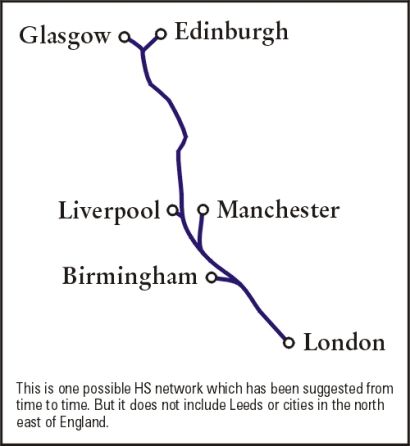The Government is due to receive the first detailed report on future High Speed rail lines in Britain this week, although the full proposals are not expected to be published straight away, to avoid unnecessary planning blight along the possible routes.
A new station in London and a route through the Chilterns and along the edge of the Lake District as part of a network linking London with the West Midlands, the north of England and Scotland are expected to be at the heart of the proposals being sent to the Government on Wednesday.
The Government company HS2, which has been preparing the report, is said to have considered 35 possible sites for a new High Speed terminus in London, but a position near Euston and the King's Cross/St Pancras hub may still be a strong contender. The new station would have about ten platforms, and be designed to deal with up to 18 departures an hour, with each 400 metre train carrying 1100 people. A 393 metre single-deck Eurostar -- the only High Speed train currently running in the UK -- has just under 800 seats.
Other likely developments are links between HS2 and HS1, and also the West Coast Main Line. Through running on to the WCML would raise questions of loading gauge, because the double-deckers needed to carry 1000 passengers would not be able to continue on to the domestic network without extensive gauge clearance works.
The new lines would reduce journey times by some 50 per cent between London and major provincial centres, with Manchester just over an hour away from the capital and London to Glasgow being achieved in 2 hours and 16 minutes, thanks to line speeds of up to 400 km/h.
Uncertainty remains about a High Speed link to the north east of England. There has been considerable lobbying in the region after some preliminary maps suggested that the main alignment of HS2 would run to Scotland via the north west.
However, the most contentious part of the plan may be the initial section between London and the West Midlands, because it will run via the Chilterns. This section is said to have been planned down to the nearest half metre, but opposition is already growing in the area. A tunnel has apparently already been considered and ruled out, partly on the grounds of its tremendous cost.
The Transport Secretary Andrew Adonis expects to publish the full report in the spring, along with a White Paper setting out the Government's recommendations. Trains could be running by 2025.


